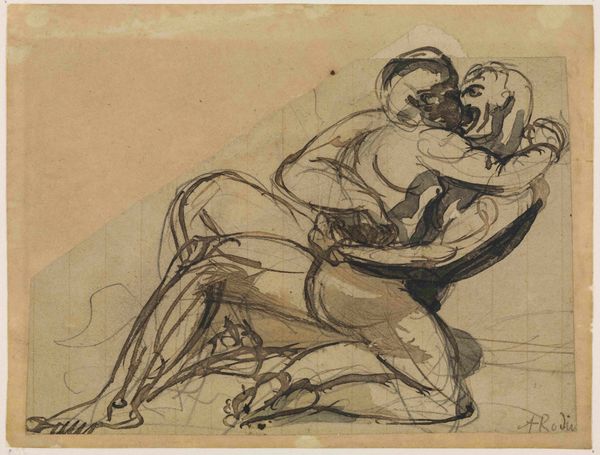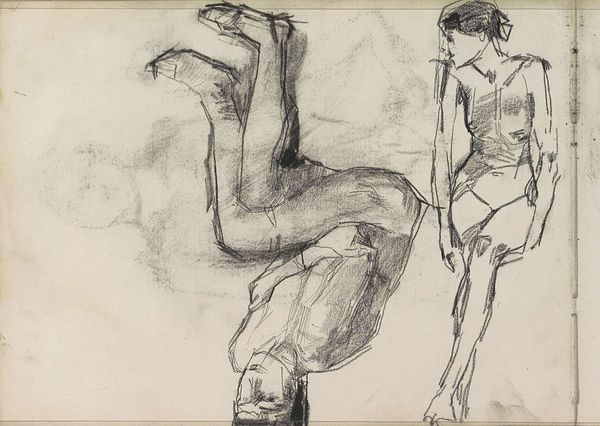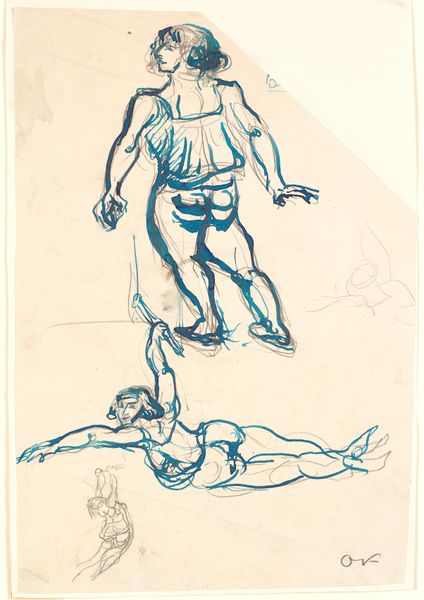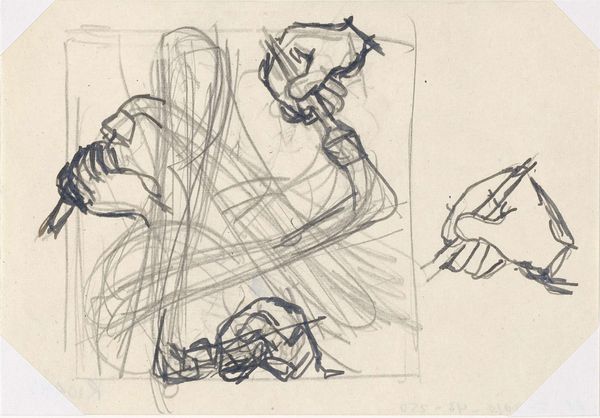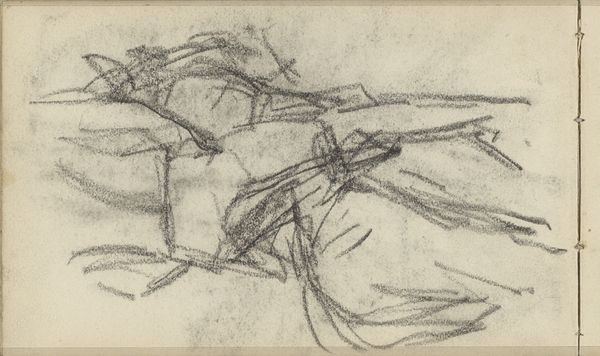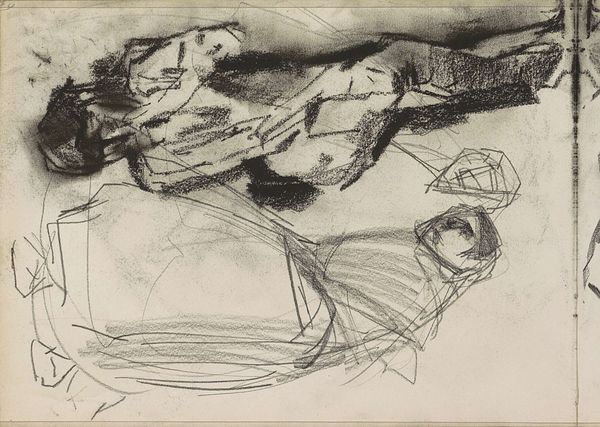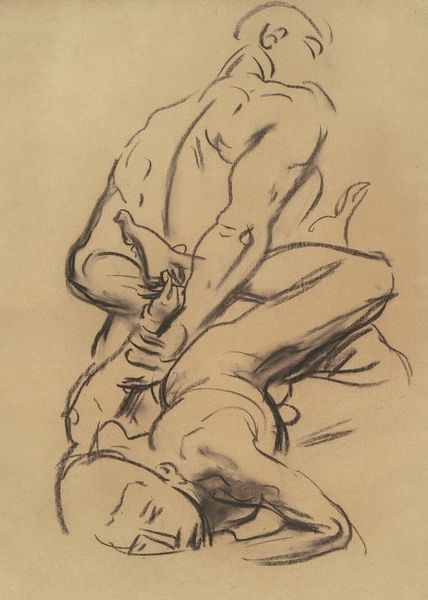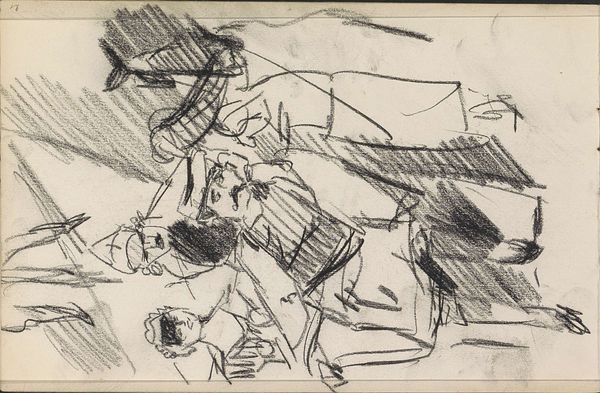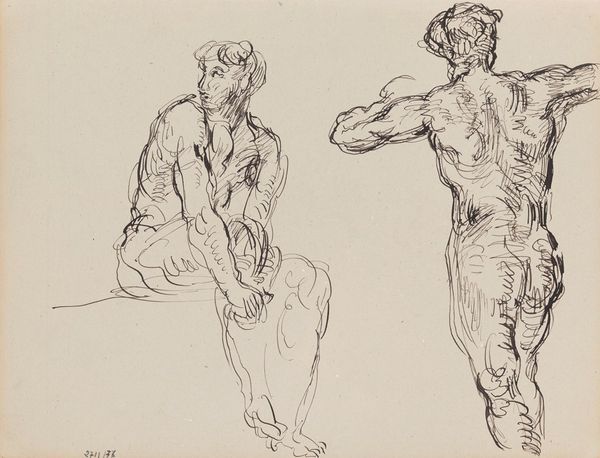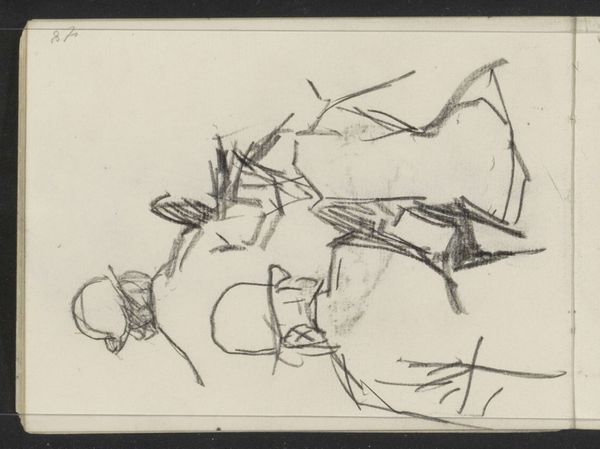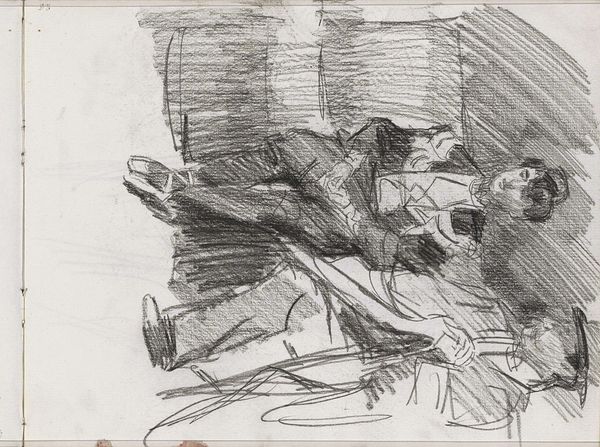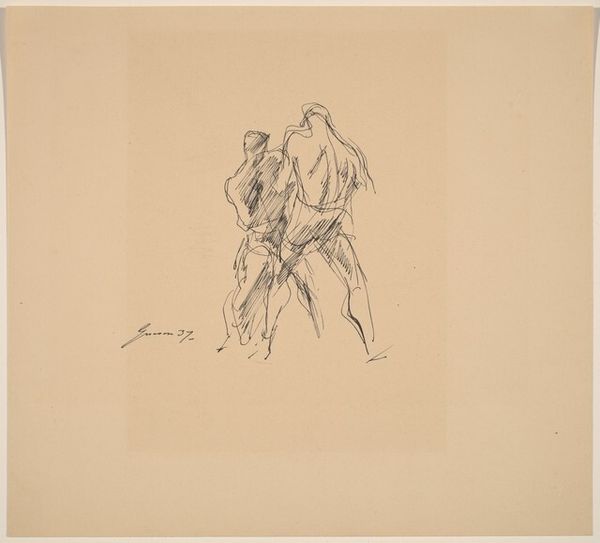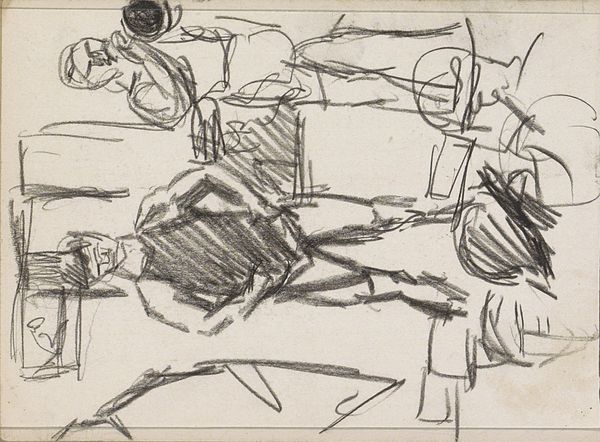
drawing, pencil
#
action-painting
#
portrait
#
drawing
#
figuration
#
pencil
#
ashcan-school
#
realism
Copyright: Public domain
Curator: This is George Luks' "Two Wrestlers," a pencil drawing from 1905. The dynamism captured with just a few strokes is remarkable, isn't it? Editor: Absolutely. My initial impression is one of raw energy and immediate physical exertion. The artist’s quick strokes and almost frenetic energy are almost palpable. Curator: Luks, often associated with the Ashcan School, frequently depicted scenes of urban life, emphasizing the working class. Wrestling, a sport historically linked to displays of masculinity and physical prowess, fits neatly into that lens, especially as a counterpoint to the more genteel pastimes. Editor: The quickness of the work also speaks volumes. It makes me think about the labor required for production – the kind of sketching speed required to quickly capture the raw physicality and form while also conveying the immediacy and violence in these sporting events. Curator: That's right. Wrestling's also a spectacle, both physically and culturally. We see themes around class, competition, and even the construction of identity. Were these public matches? Private training sessions? The ambiguity makes the piece so engaging. How did the bodies relate to each other then and now? Editor: These sketches, made with simple graphite on paper, also reveal a complex understanding of anatomical tensions, the grappling of bodies rendered with such immediacy as to capture something raw about bodies in conflict and resistance to forces – external forces but also personal forces. We may consider it from a class perspective; for them, the production and labor may mean something other than just its face value: it's a battle for survival. Curator: Precisely. And Luks’ association with the Ashcan School pushes us to look at who is represented and how. These are not idealized bodies; they are rough, working bodies. He portrays men who wrestle, as they existed: as workers and, as citizens. What we read as hyper-masculine images also become nuanced when you see those cultural representations in an intersectional setting. Editor: Agreed. This is about seeing and recognizing laborers engaged in physicality—its exertion but also production. Even within a fleeting graphite sketch, Luks challenges ideas about craft and physical labour—both in its representation and its realization. Curator: Exactly, it provides fodder for all types of study and conversation and an artwork of its time! Editor: Agreed, it is a true depiction that also challenges us.
Comments
No comments
Be the first to comment and join the conversation on the ultimate creative platform.
